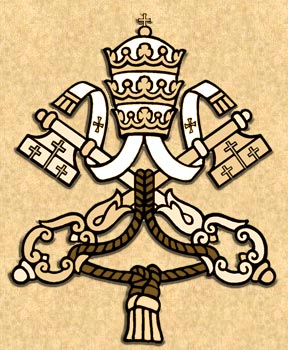Oliver Plunkett was born in Loughcrew, Co. Meath, Ireland in 1629 of well-to-do Anglo-Normal parentage. He was related by blood to a number of landowning families, such as the Earl of Fingall, Earl of Louth and Lord Dunsany. Until the age of 16, he was educated by his cousin, Patrick Plunkett, Abbot of St Mary’s in Dublin. Patrick was a brother of the first Earl of Fingall and later became bishop in turn of Ardagh and Meath.
In 1645 he set out for Rome under the care of Fr Scarampo of the Roman Oratory and stayed at the Irish College where he had a brilliant academic career. The Rector later said that Plunkett “devoted himself with such ardour to philosophy, theology, and mathematics, that in the Roman College of the Society of Jesus he was justly ranked amongst the foremost in talent, diligence, and progress in his studies… and was a model of gentleness, integrity, and piety". He was ordained a priest in 1654, and deputed by the Irish bishops to act as their representative in Rome. Meanwhile, the Cromwellian conquest of Ireland (1649-53) had defeated the Catholic cause in Ireland and, as a result, it was impossible for Plunkett to return to Ireland for many years. He asked to stay on in Rome and, in 1657, became a professor of theology at the College of Propaganda Fide. He also pleaded successfully the case of the Irish Church. On 9 July 1669, he was appointed Archbishop of Armagh, the Irish primatial see, and was consecrated on 30 November at Ghent by the Bishop of Ghent, assisted by the Bishop of Ferns and another bishop. He finally landed in Ireland in March 1670 just as the English Restoration of 1660 was becoming more tolerant.
On his return to Ireland, he began to rebuild a ravaged Church and to build schools and seminaries. The clergy he found very weak in moral theology and in their ability to deal with religious controversies. There were also drinking problems among them. As the Penal Laws had been relaxed in accordance with the Declaration of Breda in 1660, a Jesuit school was set up in Drogheda in 1670. Within a year it had 150 students. However, three years later when the Test Act which Plunkett refused to accept was enacted, the school was demolished.
Plunkett now had to travel in disguise and refused to register with the authorities for deportation. In 1678, the Titus Oates plot to blow up the Houses of Parliament led to further repression of Catholics. The Privy Council in London was also told that Plunkett was plotting a French invasion of Ireland. He had a price on his head but refused to abandon his flock.
He took refuge in a Clogherhead parish church, about 10 km outside Drogheda. He was finally arrested in Dublin in December 1679 and held in Dublin Castle, where he gave absolution to the dying Archbishop Peter Talbot of Dublin, who had also been arrested. He was tried at Dundalk for conspiring against the state by plotting to bring thousands of French soldiers into the country, and for levying a tax on the priests to support a local force for rebellion. This was not proved but there were fears that another rebellion was being planned. Because Lord Shaftesbury knew Plunkett would never be convicted in Ireland, he had him moved to Newgate prison in London. After two very dubious trials, Plunkett was found guilty of high treason “for promoting the Catholic faith” and condemned to death.
On 1 July 1681, Plunkett became the last Catholic martyr to die in England when he was hanged, drawn and quartered at Tyburn. His body was initially buried next to five Jesuits, who had died earlier, in the courtyard of St Giles. Two years later the remains were moved to the Benedictine monastery at Lamspringe, near Hildesheim in Germany. The head was brought to Rome, and from there to Armagh and eventually to Drogheda where, since 29 June 1921, it has rested in Saint Peter’s Church. Most of the other remains are now in Downside Abbey, England, with some still at Lamspringe. There are also other relics in different locations.
Oliver Plunkett was beatified in 1920 and canonised in 1975, the first new Irish saint for almost 700 years and the first Irish martyr to be beatified. He has since been followed by 17 other Irish martyrs who were beatified by Pope John Paul II in 1992. During his short and difficult ministry, Oliver Plunkett confirmed more than 48,000 people over a period of four years.
Evil triumphs when good men do nothing - Edmund Burke
Thursday, July 2, 2009
Subscribe to:
Post Comments (Atom)










No comments:
Post a Comment